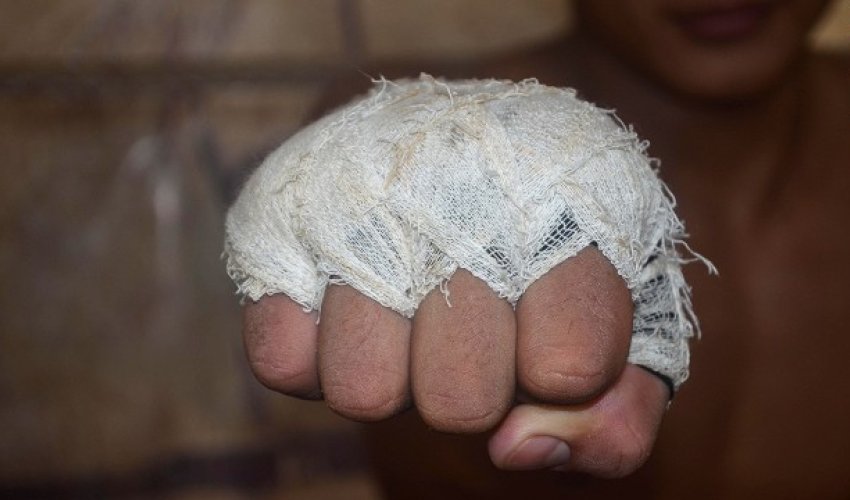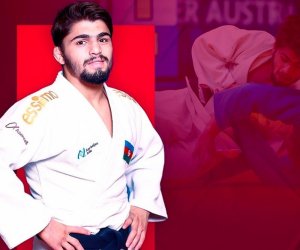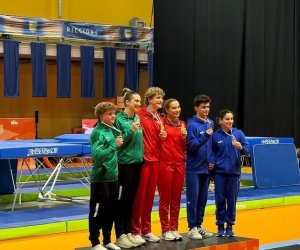Asia's 'new' martial arts sensation - PHOTO

It's been more than 20 years since he fought in a sandpit, but Lone Chaw still recalls the dusty village lots of his youth, unmarked except for footprints stained by sweat and blood.
Stamping about in a ritual known as "lat kha maung," he slaps his open palms against his elbows, imitating the wings of a fighting cock, as if attempting to summon its spirit.
Lat kha maung is performed before the matches as a kind of ritual that originated in farming villages.
This is the way of Lethwei -- Myanmar's traditional form of boxing.
Hidden from the rest of the world for decades, the sport, like Myanmar itself, is experiencing a revival and rediscovery both at home and abroad.
In August, the Woodlands Sports Hall in Singapore hosted an international bare-knuckled Lethwei challenger fight.
Similar events in Bangkok have helped usher in a new era for Lethwei.
Fighters turned trainers
Once derided as a sport fit for only rugged brutes -- Lone Chaw required eight stitches in his face after a fight at age 17 -- Lethwei is finding new respect at the Thut Ti Lethwei Burmese Boxing Gym in Yangon.
Here, Lone Chaw teaches introductory lessons to a stratum of society distinctly different from the fierce yet humble fighters he grew up facing in the Ayeyarwady Delta region.
His students are local doctors, foreign investment bankers and even Myanmar celebrities, including advertisement pinup Wutt Hmone Shwe Yi.
"Two years ago, foreigners began coming here," says Win Zin Oo, founder and director of the gym. "Today the Lethwei classes are, on average, half foreign and half local."
Weekend classes can attract up to 10 students, he says.
The boxing club is especially proud of having trained a headline-making Lethwei fighter from the UK, "Mr. Hammer" Sean Bardoe.
During a fight in 2013, Bardoe, 44, displayed a "mental and physical toughness," according to Mr. Win, that won over the crowd and landed him a draw in the ring.
But those interested in taking up the sport don't have to have professional aspirations.
"The workout for extreme pro fighters may not be appropriate for starters so we use a more simplified form for our students," says Mr. Win, who by day is the Humanitarian and Emergency Affairs Director for World Vision, an American NGO.
Mr. Win (as he prefers to be called) is Mickey to Lone Chaw's Rocky.
He coached the Golden Belt freeweight champion until the fighter's retirement.
One of Mr. Win's fondest memories of coaching was Lone Chaw's first fight in Japan, 10 years ago.
Competing under Lethwei rules, a local jujitsu star went up against the then-29-year-old Lone Chaw.
Lone Chaw took him down in less than a minute, leaving the Nagasaki crowd astonished.
"They watched a country boy KO his opponent in the first round, unexpectedly," Mr. Win recalls with pride.
Fewer kicks, higher intensity
At Thut Ti Gym, Lone Chaw and Mr. Win now work as tag-team instructors, offering training sessions for 5,000 kyat ($5) per person.
The setting is typical of the improvised simplicity familiar across Myanmar.
An iron-wrought roof and plastic tarps are all that shield the gym from the elements.
Novices practice agility by bouncing on tires.
The modest ring vibrates with energy every Saturday, when practitioners spar.
Though it bears some resemblance to the Muay Thai practiced in neighboring Thailand, Lethwei is different in a number of ways.
"In Muay Thai, kicks and knee strikes prevail, but Lethwei fighters use more punches and fewer kicks," explains Mr. Win.
"Traditionally, Lethwei fighters don't fight with gloves, and we use a lot of other components such as throwing, choking and head butts. At a more elemental level, the momentum and fighting intensity are much faster."
Bare-knuckled fighting
Watching matches, that momentum becomes evident.
(CNN)
Bakudaily.Az




































 Photo
Photo 



 Video
Video 

